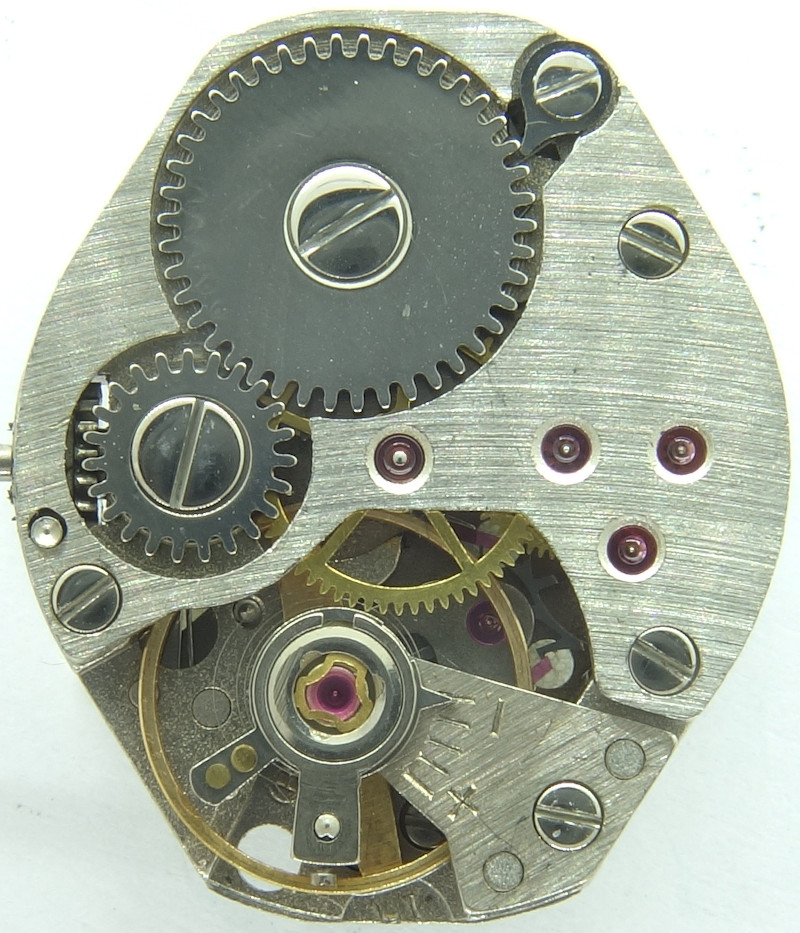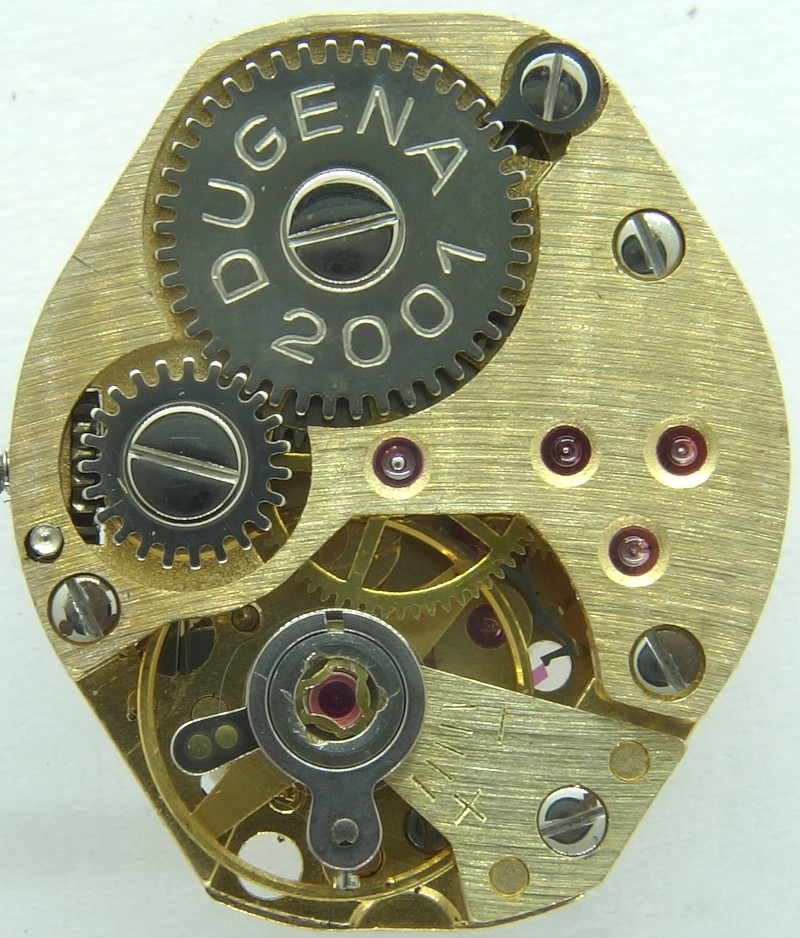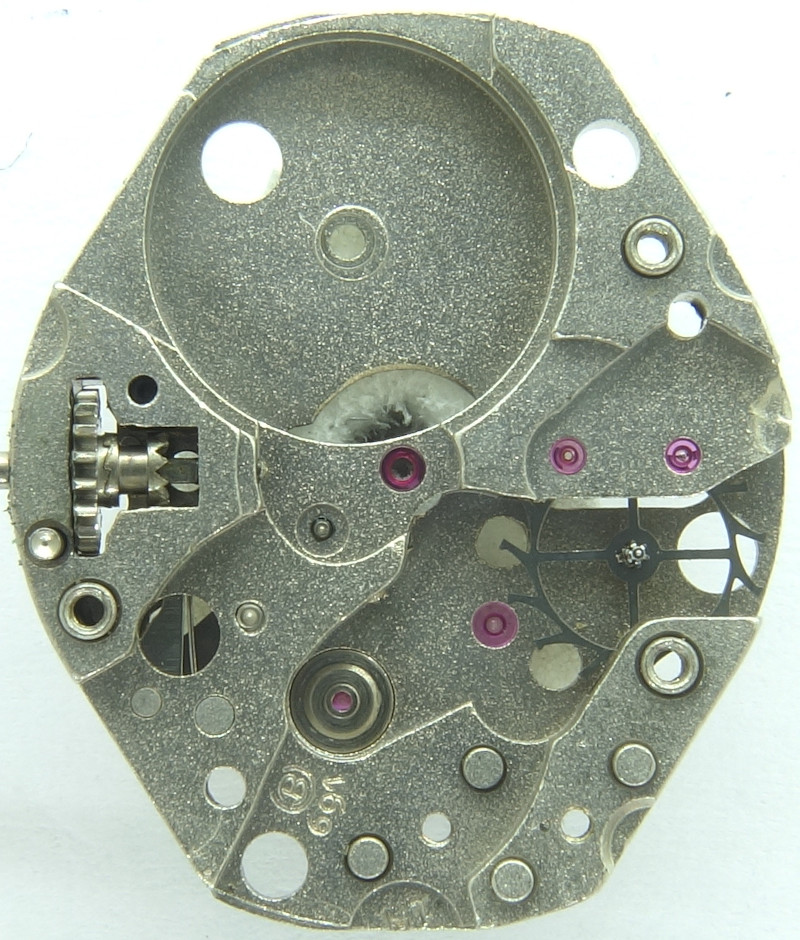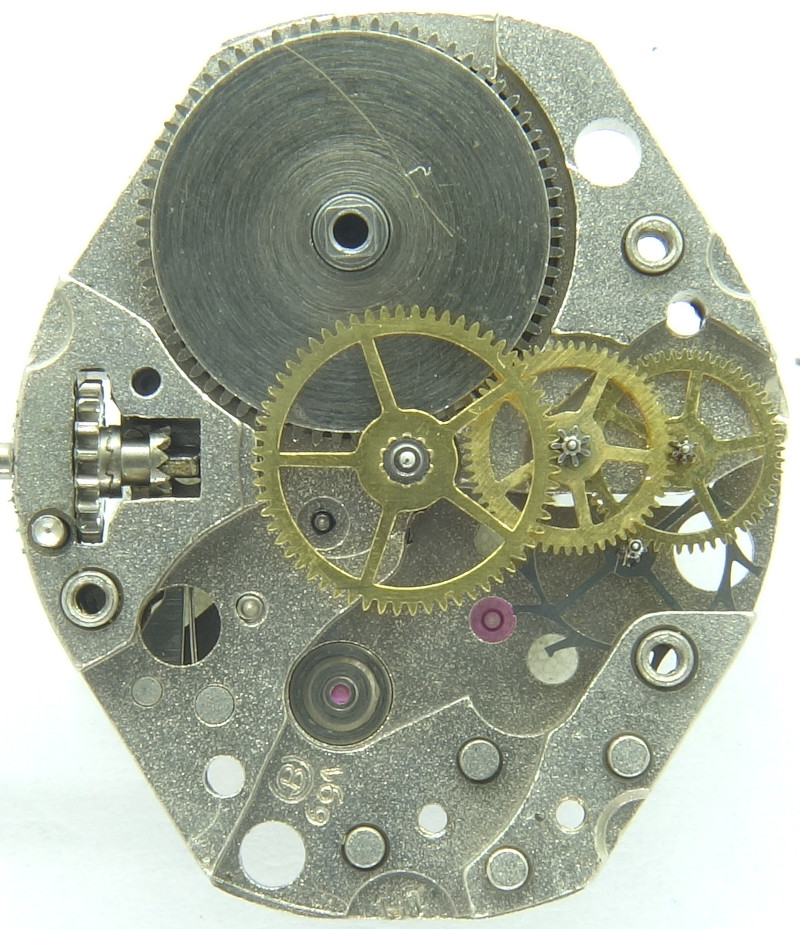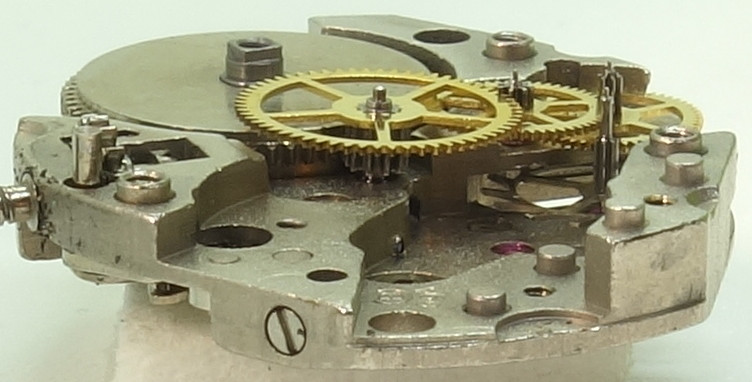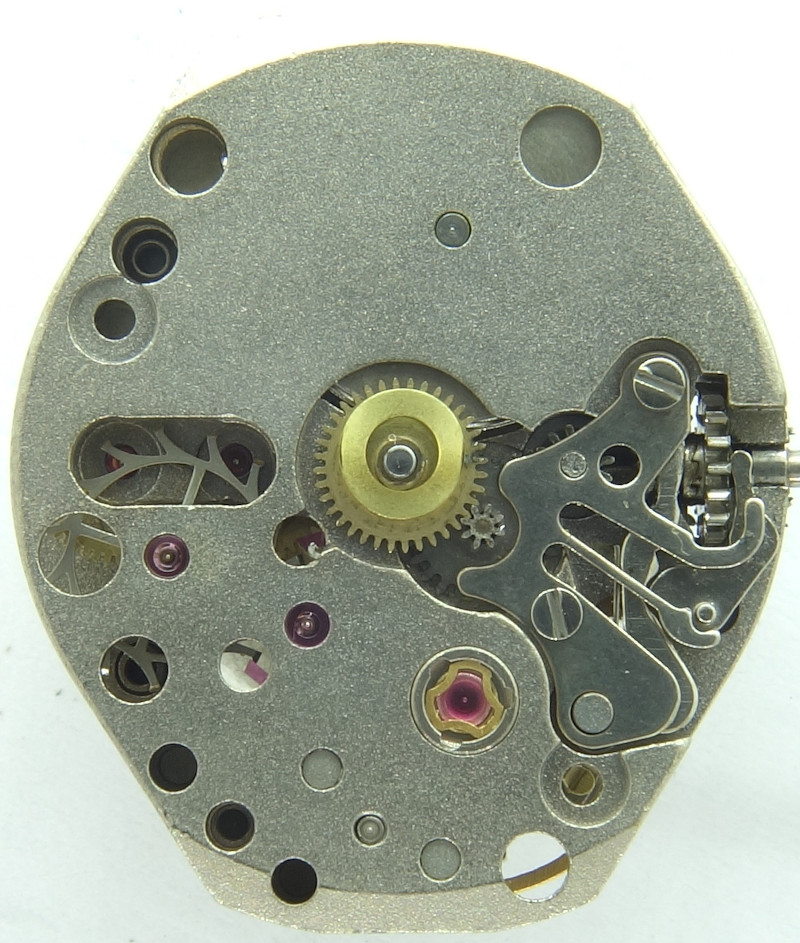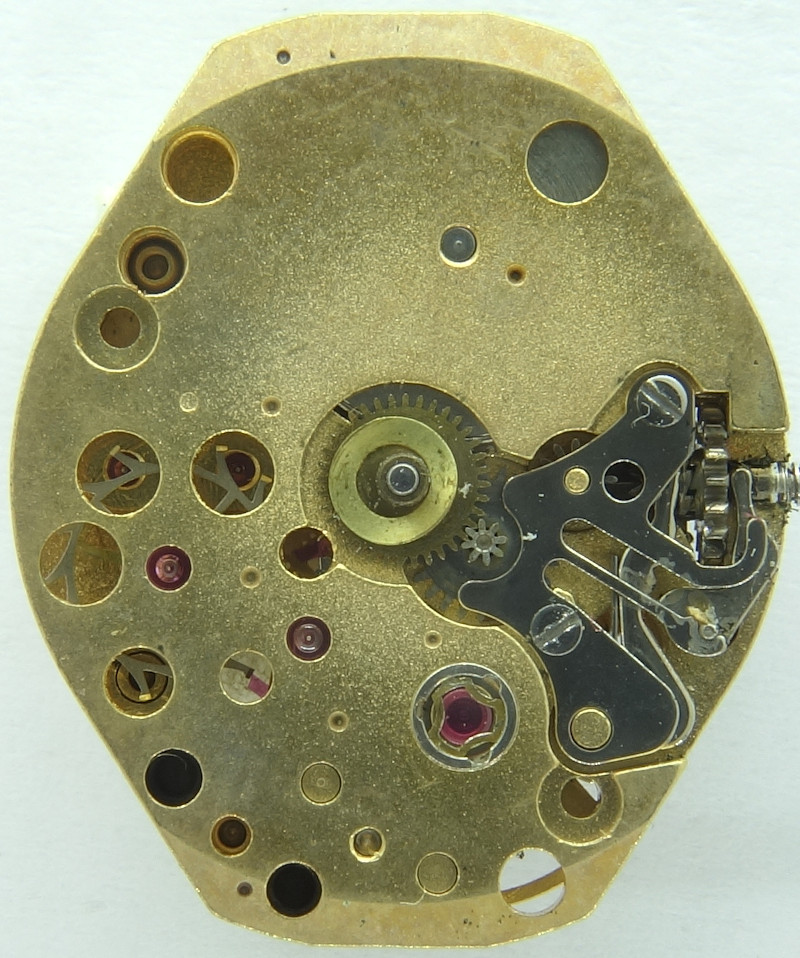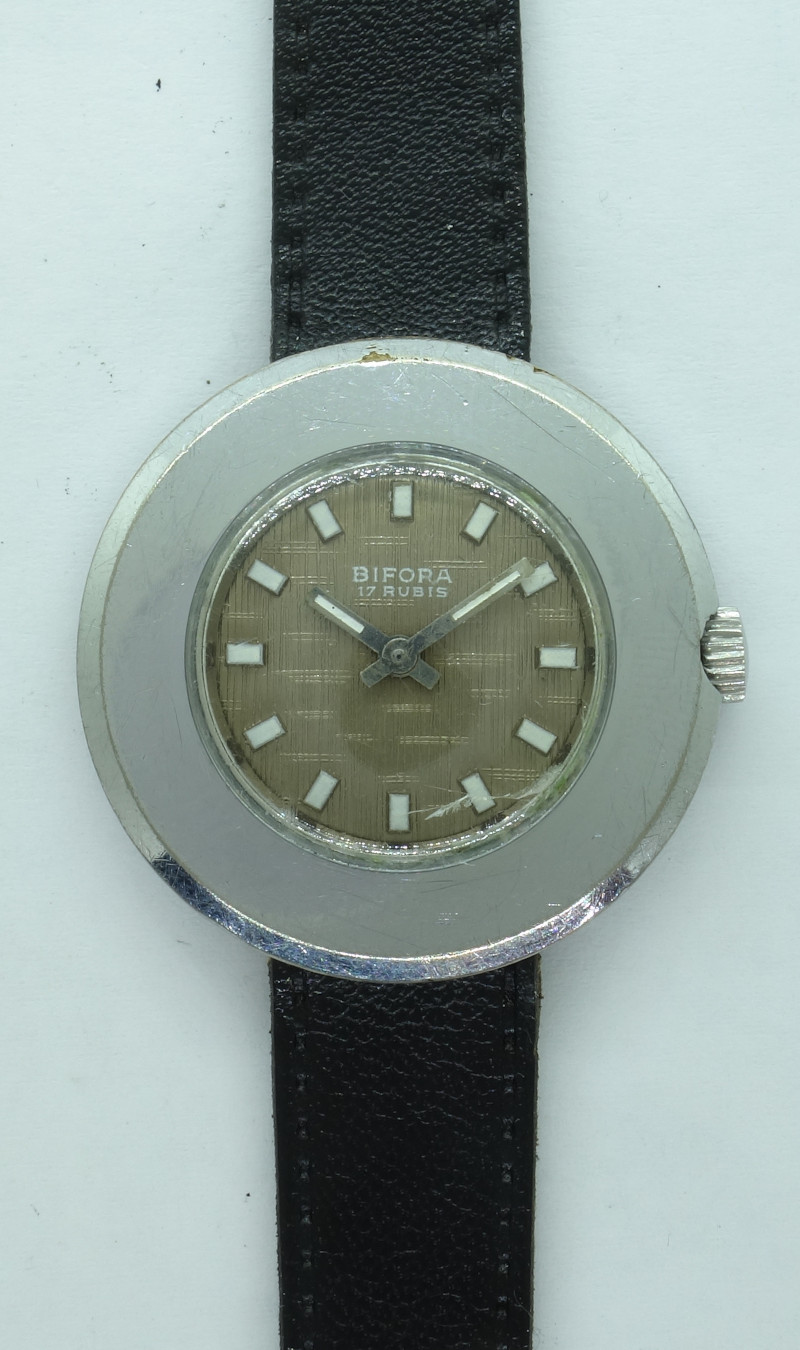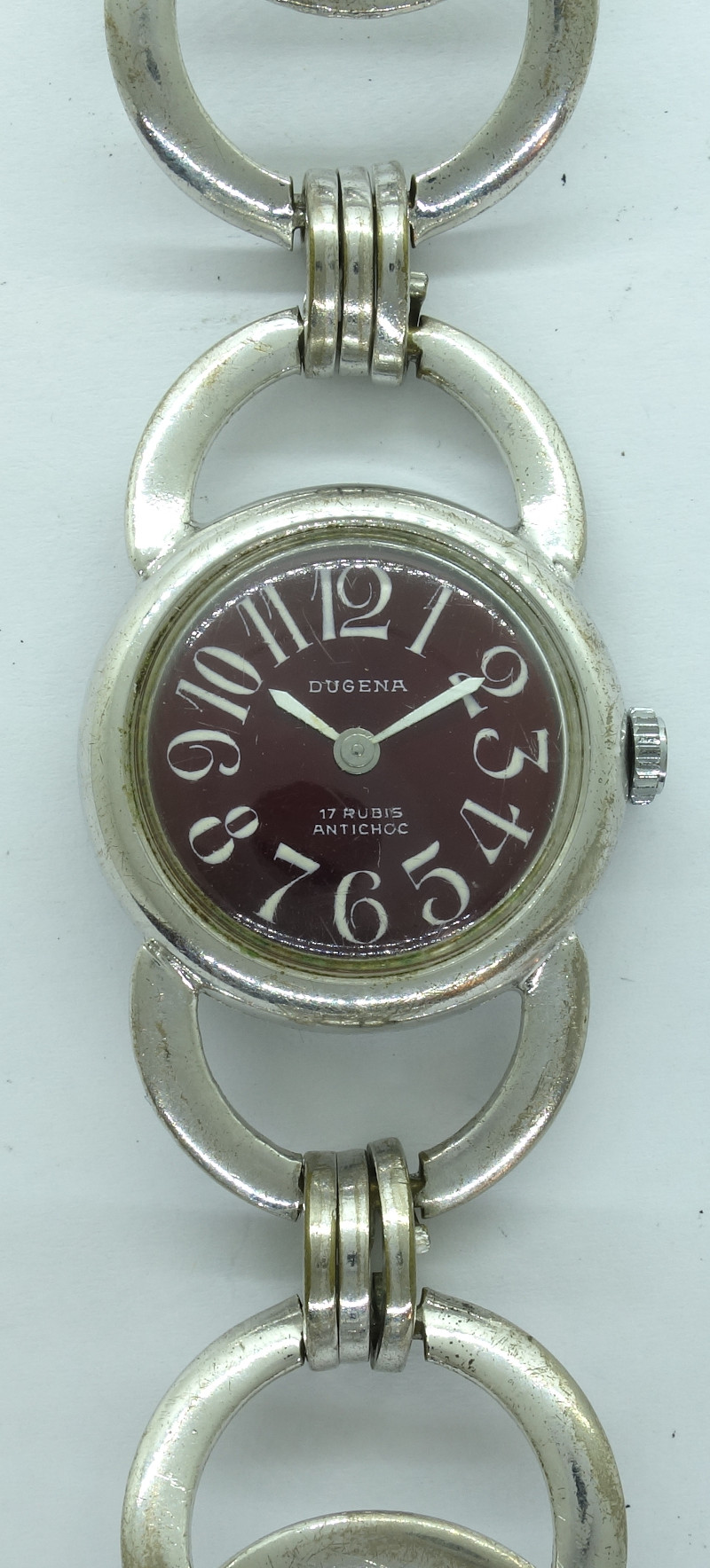Description
The 6 3/4 ligne, tonneau-shaped Bifora 691 was also used by Dugena under their own caliber number “Dugena 2001”. Besides the golden-toned plates, there are minor difference on the balance cock: Hairspring key and stud are a little bigger and more rounded.
It finishes the series of tonneau-shaped ladies’ movements from Bifora and was made until 1980. Its modern, cost-efficient construction can be seen e.g. on the fact, that the gear train bridge also covers the mainspring barrel and carries the crown wheel, so no additional bridge is used.
Of course, on this pallet lever movement, all bearings contain synthetic rubies, even the minute wheel bearing has got two of them. Hence, the marketing efficient number of “17 jewels” could be achieved without additional cap jewels.
The gear train is the classical one with main spring barrel, directly driven center minute wheel, third wheel, seconds wheel and finally the steel escape wheel.
Due to the reduced space, which a tonneau-shaped movement offers, a two-storey construction is used, where the lower bearings of the two small third- and seconds wheels are located above the large escape wheel.
With its 21600 A/h, adjustable at the hairspring key only, the Bifora 691 was contemporarily semi-fast. Its two-leg anular balance is beared in two inhouse “Bishock” bearings.
On the dial side, you see the yoke winding system, and also the two lower bearings, which are located (movement-side wise) above the escape wheel.
The Dugena 2001 version has got golden toned plates and bridges.
In the lab
Timegrapher result
For a movement of that small size (the native Bifora version was tested), the results are pretty impressive, only the big difference between vertical and horizontal positions is not optimal. If that difference was lower, the movement would be capable to run almost within the chronometer specs.| horizontal positions | |||
|---|---|---|---|
| dial up | -4 s/d | 316° | 0.1ms |
| dial down | +-0 s/d | 289° | 0.0ms |
| vertical positions | |||
| crown right (12 up) | +4 s/d | 252° | 0.5ms |
| crown up (3 up) | +8 s/d | 245° | 0.3ms |
| crown left (6 up) | +19 s/d | 253° | 0.0ms |
| crown down (9 up) | +12 s/d | 253° | 0.0ms |
Technical data
| Manufacturer: | Bifora |
| Caliber: | 691 |
| Caliber base: | Bifora 69 |
| Size: | 6 3/4 x 8''' (measured: 15,2 x 18,0mm) |
| A/h: | 21600 |
| Number of jewels: | 17 |
| Escapement: | Pallet lever |
| Balance types: |
monometallic anular balance (two legs) |
| Shock protection(s): |
Bidlingmaier (Bifora) |
| Balance bearing / direction hairspring: | Clockwise |
| Moveable stud: | yes |
| Adjust mechanism: | Hairspring key |
| Construction: |
|
| Construction type: | solid construction |
| Winding mechanism: | yoke winding system |
| Setting lever spring: | 4 hole(s) |
| Production period: | 1968 - 1980 |
| Production years: | 1968-1980 |
| Inventory number: | 22058 |
